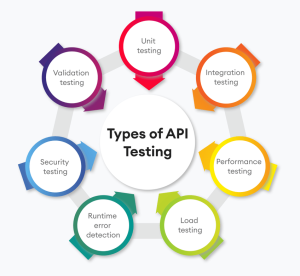
Top API Vulnerabilities:
- Broken Object Level Authorization (BOLA): When APIs expose object identifiers without proper access controls, unauthorized users can manipulate these objects, gaining access to sensitive data.
- Broken Function Level Authorization (BFLA): Occurs when users gain access to functions or endpoints they should not have permission to use, often by tampering with request parameters or methods.
- Security Misconfiguration: Insecure default configurations, outdated software, or overly permissive permissions lead to exploitable security gaps.
- Mass Assignment: Improper binding of client data, allowing unauthorized users to modify sensitive fields by guessing parameters or exploiting weak documentation.
- Code Injection: Malicious code is executed via SQL, NoSQL, LDAP, or OS command injection, which can manipulate the API’s backend processes.
- Broken User Authentication: Weak or improperly implemented authentication mechanisms can result in unauthorized access, session hijacking, or account takeover.
- Excessive Data Exposure: APIs may return more data than needed, potentially leaking sensitive information like PII or financial data.
- Insufficient Logging and Monitoring: Without proper logging and monitoring, suspicious activities can go undetected, leaving the system vulnerable to long-term exploitation.
What is OWASP?
The Open Web Application Security Project (OWASP) is a community-driven organization dedicated to improving software security. OWASP’s free tools, documentation, and resources help developers, organizations, and security professionals safeguard their applications and APIs.
One of the key contributions of OWASP is its API Security Top 10, which outlines the most critical API vulnerabilities, helping organizations stay informed about current security risks and mitigation strategies.
OWASP Top 10 API Vulnerabilities (2023)
- API1:2023 – Broken Object Level Authorization (BOLA): Remains the top vulnerability, emphasizing the importance of proper access control at the object level.
- API2:2023 – Broken Authentication: Expanded to cover issues like weak passwords, session management flaws, and insecure credential handling.
- API3:2023 – Broken Object Property Level Authorization: New vulnerability combining Excessive Data Exposure and Mass Assignment, focusing on unauthorized access to sensitive object properties.
- API4:2023 – Unrestricted Resource Consumption: Previously referred to as “Lack of Resources & Rate Limiting,” this vulnerability allows attackers to deplete system resources through uncontrolled API requests.
- API5:2023 – Broken Function Level Authorization (BFLA): Persistent in the top 5, highlighting the risks of poor authorization at the function level.
- API6:2023 – Unrestricted Access to Sensitive Business Flows: New entry focusing on unregulated access to critical business operations like transactions or reservations.
- API7:2023 – Server-Side Request Forgery (SSRF): Attackers exploit APIs to force internal requests to sensitive or internal systems, bypassing firewalls and security controls.
- API8:2023 – Security Misconfiguration: Continues to be a major issue due to insecure default setups and improper configuration practices.
- API9:2023 – Improper Inventory Management: Similar to 2019’s version, highlighting the risks associated with undocumented APIs and old endpoints.
- API10:2023 – Unsafe API Consumption: New in 2023, this issue focuses on APIs that rely on untrusted third-party APIs, making them vulnerable if the external APIs are compromised.
Conclusion
The API security landscape has evolved, but core vulnerabilities like BOLA and Broken Authentication continue to dominate. The 2023 OWASP list emphasizes the need for deeper control over resource consumption, sensitive business flows, and third-party API integration. Regular pentesting remains essential in identifying these vulnerabilities, and applying OWASP’s guidelines can significantly bolster an API’s defense.